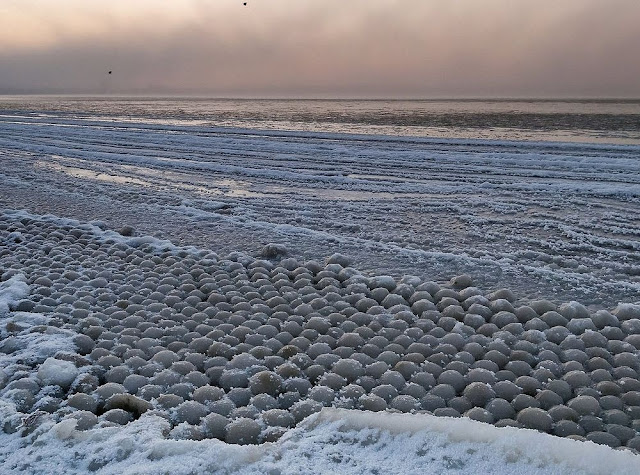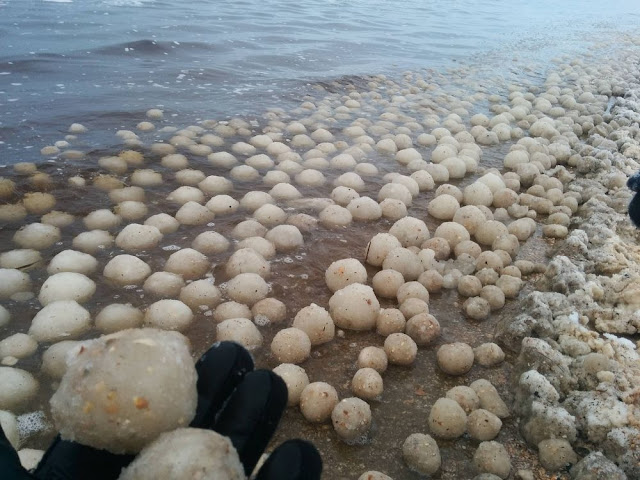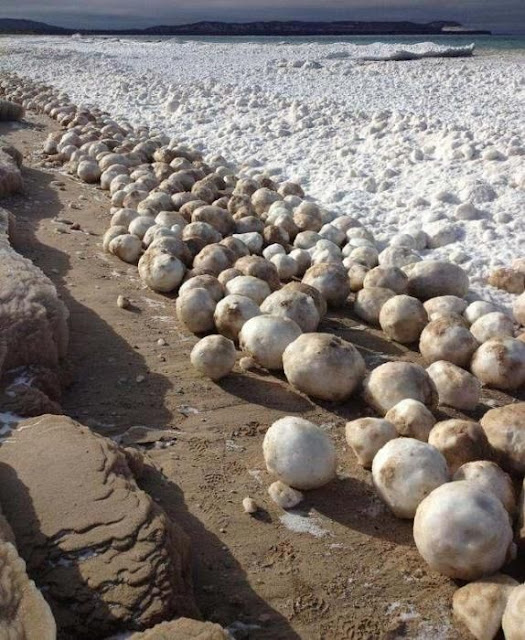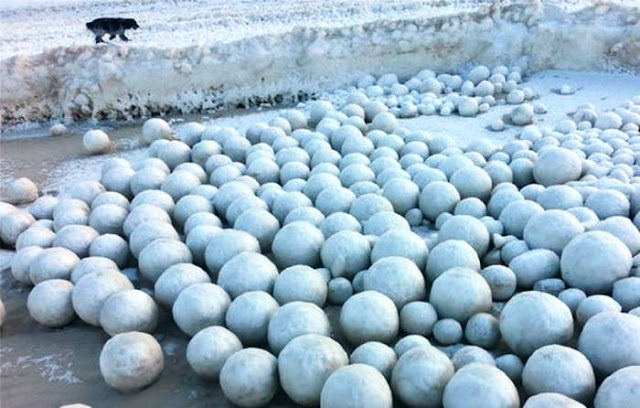--------oOo-------
Byter Graham E sent me an email with photographs he described as “some views of the Universe as art”.
Thanks Graham.
The pics appear below with additional comments from myself.
--------oOo-------
The White Cliffs of Iturup Island:
Comment:
Iturup is an island of the southern group of the Kuril Islands, the largest island of the archipelago and part of the Sakhalin region, one of the most easterly regions of Russia. It has prominent white cliffs consisting of pumice – congealed volcanic ash.
Gallery:
--------oOo-------
The White Volcanoes of Harrat Khaybar:
Comment:
In addition to huge sand deserts and oil fields, Saudi Arabia also has many volcanoes and extensive lava fields (called ″harrats″). One volcanic field is, known as Harrat Khaybar and contains some of the rarest examples of white volcanoes, so called because of their light colored rocks caused by the presence of a kind of alkali and silica-rich light blue-gray igneous rock called comendite.
The two largest white volcanoes on the Harrat Khybar (central Arabia) are Jebel Abyad and Jebel Bayda (back in the following picture):
Both names mean the colour white in Arabic. Bayda is the feminine word whereas Abyad is the masculine word for white. Both cones were shaped by the rain during the Early Holocene when different climatic conditions occurred in the area.
The Saudi harrats also have black lava flows:
--------oOo-------
Salt Glaciers of the Zagros mountains, Iran:
Comment:
Million of years ago, the Persian Gulf was a much larger body of water than it is today, inundating large sections of the Arabian peninsula in the south and Iran in the west. As the water evaporated and the shores of the sea retreated, it left behind vast quantities of salt. The layer of salt became covered with sediments washed down from the mountains by rainwater, and over time, the sediment layer thickened, became compact and weighed down heavily on the salt layer underneath.
Salt domes (hills) and salt glaciers (dark areas) in the Zagros Mountains of southern Iran.
--------oOo-------
Ice balls on Stroomi beach on the Gulf of Finland:
Comment:
Every winter, on the shores of Lake Michigan in the United States, as well as on Stroomi beach in northern Tallinn, Estonia, hundreds of frozen ice balls form naturally. The balls can range from 5 cm/a few inches to more than 30cm/12 inches across. The balls form when chunks of ice break off the massive ice sheets that coat parts of the lake in the winter, and as the waves toss the ice blocks around the lake, additional ice forms around them in layers and the ice blocks gets bigger and bigger just like snowballs or hailstones. The pounding of the waves shape the ice into spheres.
A similar phenomenon is seen on Stroomi beach on the Gulf of Finland. According to the German news portal Spiegel Online, a very specific condition is required for ice balls to form. The sea must also be flat, and the base must not drop steeply. These conditions prevail on the Gulf of Finland against Estonia.
Stroomi Beach
Lake Michigan
Lake Michigan




















No comments:
Post a Comment
Note: Only a member of this blog may post a comment.